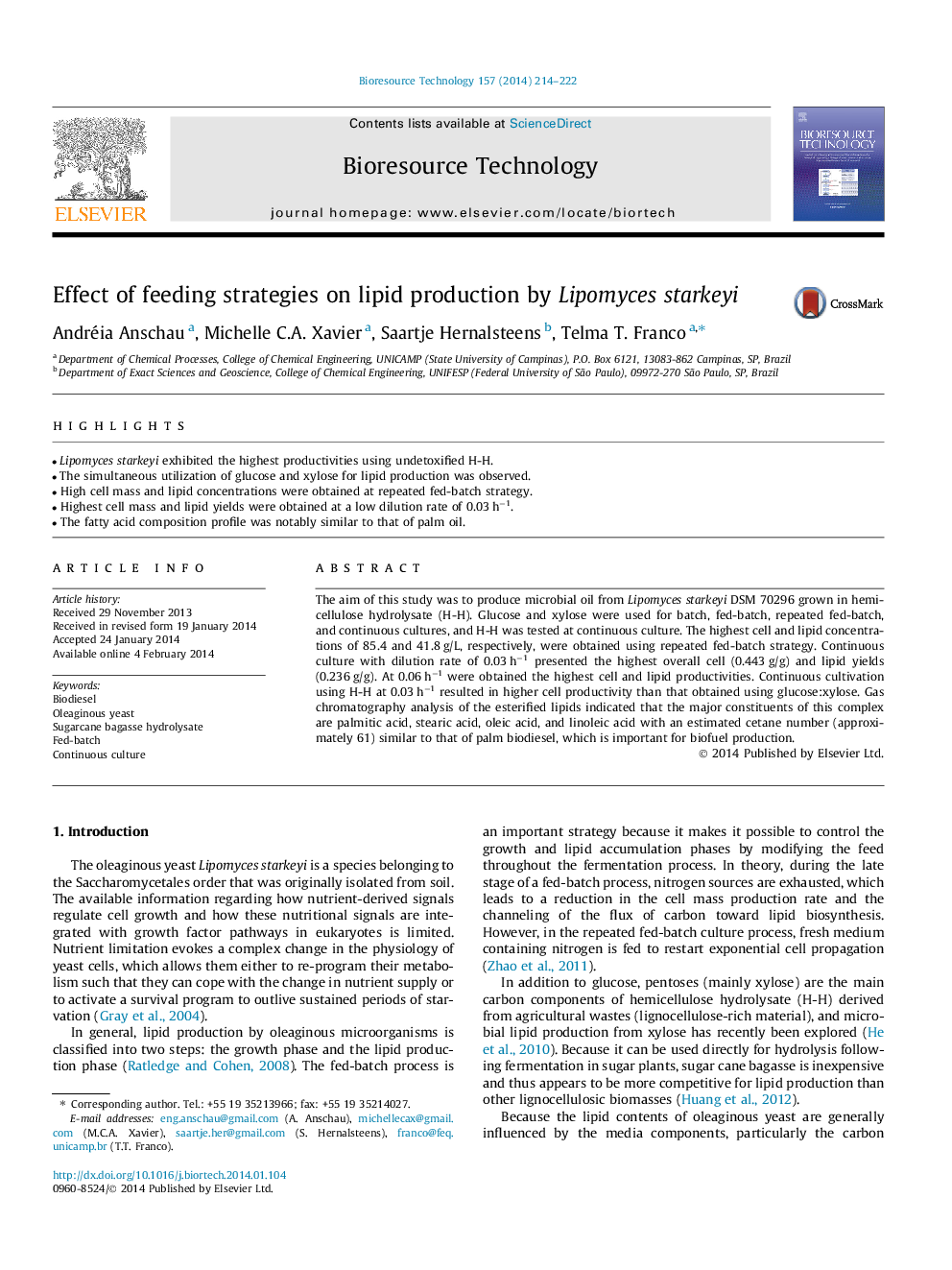| Article ID | Journal | Published Year | Pages | File Type |
|---|---|---|---|---|
| 680939 | Bioresource Technology | 2014 | 9 Pages |
•Lipomyces starkeyi exhibited the highest productivities using undetoxified H-H.•The simultaneous utilization of glucose and xylose for lipid production was observed.•High cell mass and lipid concentrations were obtained at repeated fed-batch strategy.•Highest cell mass and lipid yields were obtained at a low dilution rate of 0.03 h−1.•The fatty acid composition profile was notably similar to that of palm oil.
The aim of this study was to produce microbial oil from Lipomyces starkeyi DSM 70296 grown in hemicellulose hydrolysate (H-H). Glucose and xylose were used for batch, fed-batch, repeated fed-batch, and continuous cultures, and H-H was tested at continuous culture. The highest cell and lipid concentrations of 85.4 and 41.8 g/L, respectively, were obtained using repeated fed-batch strategy. Continuous culture with dilution rate of 0.03 h−1 presented the highest overall cell (0.443 g/g) and lipid yields (0.236 g/g). At 0.06 h−1 were obtained the highest cell and lipid productivities. Continuous cultivation using H-H at 0.03 h−1 resulted in higher cell productivity than that obtained using glucose:xylose. Gas chromatography analysis of the esterified lipids indicated that the major constituents of this complex are palmitic acid, stearic acid, oleic acid, and linoleic acid with an estimated cetane number (approximately 61) similar to that of palm biodiesel, which is important for biofuel production.
